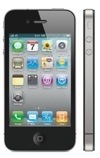According to 3Cinteractive (www.3C.com), video is now a mobile-first experience and will account for 77% of all US mobile data traffic by 2020, up from 61% in 2015.
With this focus on video for user-generated content creation, 3Cinteractive is seeing the big players putting emphasis on the quality and functionality surrounding mobile phone cameras, and even introducing their own alternatives for better quality video. What do brands, retailers and marketers now need to know about their prospects of utilizing video for mobile campaigns?
In its September release event, Apple unveiled updated specs of the iPhone 7 camera, including dual camera functionality that foreshadows upcoming AR/VR plans in the future.
Last month, Snapchat released its first hardware product, Spectacles, which are glasses designed to capture short video clips by clicking the button on the device. Instead of being tied to the user’s smartphone camera, Snapchat (now Snap Inc.) will be more in control of the quality of video content on its platform. With video replacing text as the primary form of communication on apps like Snapchat, controlling the camera and video experience is crucial to the customer experience.
Facebook released Instant Video which allows users to send short videos within a Facebook Messenger chat, and Instagram’s new ‘Stories’ parallels Snapchat’s ability to share short, un-edited video to other users in the app or on the main feed of the home screen.
Google’s Daydream and Tango platforms focus mainly on providing enhanced VR capabilities in smartphones and could open the door to allow for users to search for information through their cameras instead of through text or voice capabilities.

![[NPL] StuffIt Deluxe 5.1.5 Update](https://www.mactech.com/wp-content/themes/Extra/images/post-format-thumb-text.svg)

